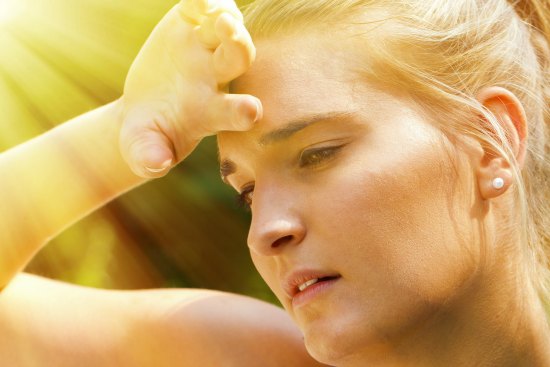This summer has been unusually warm, and since the temperatures continue to break records across the country and worldwide, it is time to get familiar with signs of heat illnesses and how to assist if you do overheat. Heat exhaustion and heat stroke are potentially fatal conditions, and it’s critical to know the signs, symptoms, and how to help yourself or others when heat illness occurs.
According to the Centers for Disease Control and Prevention, more people in the U.S. die each year from extreme heat exposure than from hurricanes, lightning, tornadoes, floods, and earthquakes combined.
A “heat illness” is an illness caused by exposure to too much heat. The common types are heat exhaustion and heatstroke.
Heat exhaustion is a milder of heat-related illness that could develop after several days of exposure to high temperatures and inadequate or unbalanced replacement of fluids.
Heatstroke is more specific and prolonged, which means the body is experiencing neurologic changes, like loss of consciousness and/or seizures. Heatstroke occurs when the body can no longer regulate its internal temperature and cool down. Heatstroke can cause the body’s temperature to reach 106 degrees Fahrenheit within mere minutes. Without emergency treatment, this condition can result in permanent damage or death.
To prevent a heat illness from reaching a dangerous point, know the signs:
- Heavy sweating
- Faintness
- Weak, rapid pulse
- Muscle cramps
- Nausea
- Headaches
- cool, moist skin with possible goosebumps while in the heat
Once you know the signs, if you or someone else is experiencing these, you can take immediate action to help. The Red Cross recommends you follow these steps:
- If they’re losing consciousness or vomiting, immediately call 9-1-1
- Relocate the person to an air-conditioned or shaded area
- Provide cool water they can drink slowly
- Apply ice or cold towels to the head, neck, groin, wrists, ankles, and underarms
Immersing someone in cold water is the best way to cool someone off rapidly. Make sure you are monitoring yourself and your children if you are in the heat for prolonged periods of time.
How To Prevent Heat Illnesses
Prevention of heat illnesses should be taken during the summer months. Be intelligent about your decisions. For example, is mountain biking 35 miles a wise decision when it’s over 100 degrees outside? Maybe not. That doesn’t mean you don’t go; shortens the trip, reschedule or change routes, so there’s more shade along the way. Look for ways to help yourself out. Performing strenuous activities during the hottest part of the day is often how people come down with a heat illness. Simply be aware of the activity, temperature, and risk involved. Drink plenty of fluids both before and after the activity.
You can also employ the following techniques:
- Wearing looser, lighter clothing to help dispel the heat
- Avoid alcohol and heavy meals
- Avoid getting sunburned
You can generally try to stay cool on hot days by drinking fluids and keeping up with electrolytes. You can also do your best to ensure you have a way to cool off if the heat becomes a real concern. Sunscreen won’t protect you from heat illness; it will help prevent sunburn, which will help keep the body cool.
This article was originally published at Ready Nutrition™ on August 22nd, 2022







